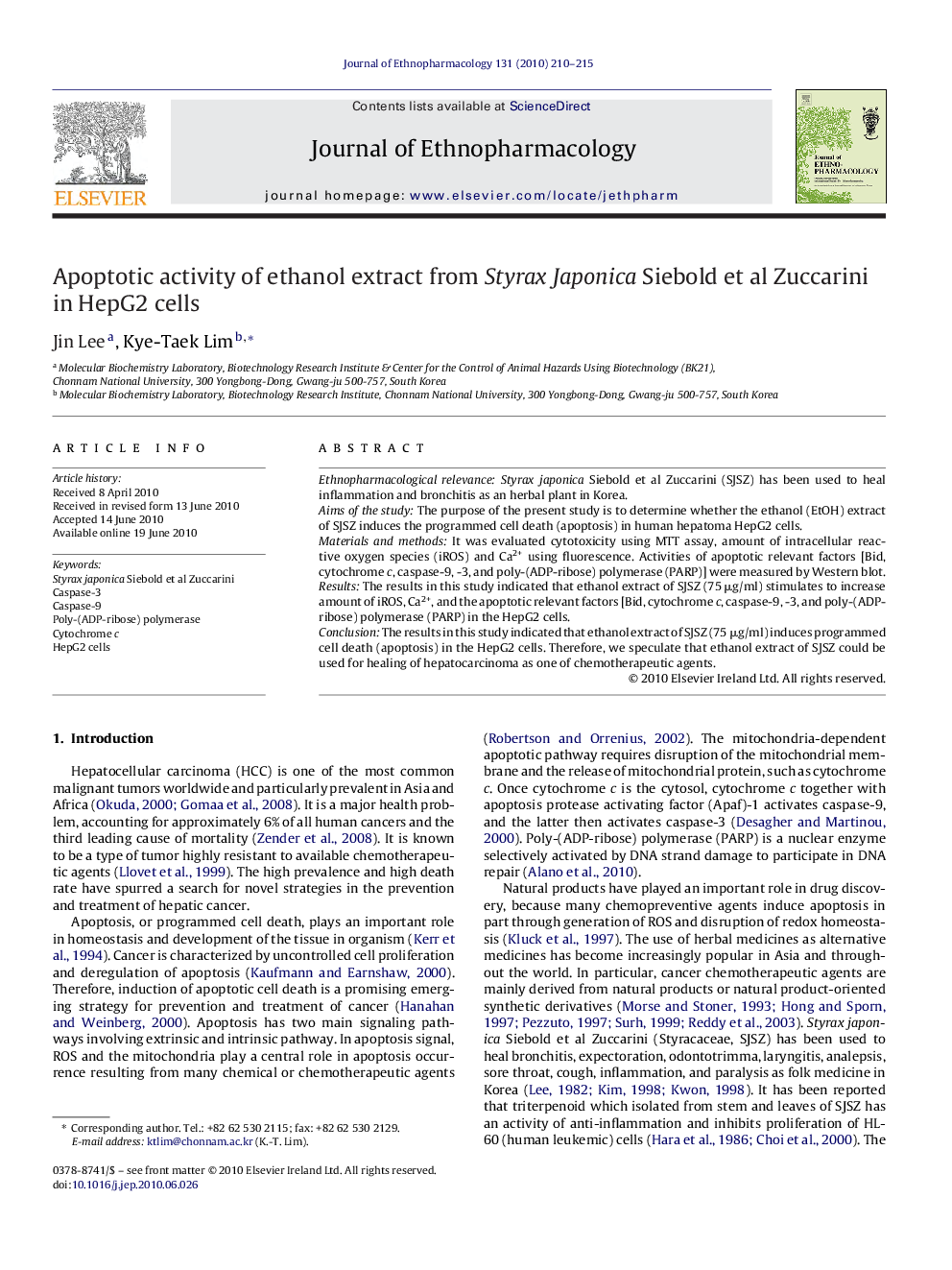| Article ID | Journal | Published Year | Pages | File Type |
|---|---|---|---|---|
| 2546230 | Journal of Ethnopharmacology | 2010 | 6 Pages |
Ethnopharmacological relevanceStyrax japonica Siebold et al Zuccarini (SJSZ) has been used to heal inflammation and bronchitis as an herbal plant in Korea.Aims of the studyThe purpose of the present study is to determine whether the ethanol (EtOH) extract of SJSZ induces the programmed cell death (apoptosis) in human hepatoma HepG2 cells.Materials and methodsIt was evaluated cytotoxicity using MTT assay, amount of intracellular reactive oxygen species (iROS) and Ca2+ using fluorescence. Activities of apoptotic relevant factors [Bid, cytochrome c, caspase-9, -3, and poly-(ADP-ribose) polymerase (PARP)] were measured by Western blot.ResultsThe results in this study indicated that ethanol extract of SJSZ (75 μg/ml) stimulates to increase amount of iROS, Ca2+, and the apoptotic relevant factors [Bid, cytochrome c, caspase-9, -3, and poly-(ADP-ribose) polymerase (PARP) in the HepG2 cells.ConclusionThe results in this study indicated that ethanol extract of SJSZ (75 μg/ml) induces programmed cell death (apoptosis) in the HepG2 cells. Therefore, we speculate that ethanol extract of SJSZ could be used for healing of hepatocarcinoma as one of chemotherapeutic agents.
Graphical abstractEffect of ESJSZ on apoptosis-related proteins (caspase-3, -9 and PARP) in HepG2 cells.HepG2 cells were treated with ESJSZ (25, 50 and 75 μg/ml) for 4 h. The relative intensities of bands were calculated using Scion Imaging Software (Scion Image Beta 4.02, Maryland, USA). All data represent the means ± SE from triplicate separately. Lane 1, control; lane 2, 25 μg/ml ESJSZ; lane 3, 50 μg/ml ESJSZ; lane 4, 75 μg/ml ESJSZ. α-Tubulin was used as an internal control. ESJSZ is named after ethanol extract from SJSZ.Figure optionsDownload full-size imageDownload as PowerPoint slide
